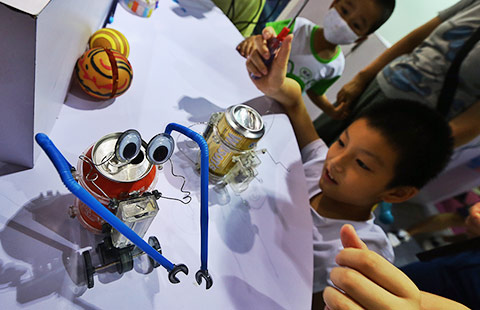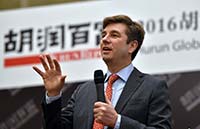

The second challenge is to enhance the role of the private sector. This is vital to avoiding the middle-income trap. Without a creative private sector, innovation in economic activity will not take place. Moreover, companies need incentives, financing, and the right policy and legal environment.
The government should also review the role of State-owned enterprises. State monopolies still dominate key areas of the economy. Following an initial rationalization of SOEs in the 1990s, reforms have slowed. The leadership change provides an opportunity to take a fresh look at the issue.
Financial markets are in urgent need of reform. State-owned banks lend mainly to local governments and large SOEs. Small and medium-sized enterprises generate a large share of GDP, provide jobs, and have a stronger track record for innovation than SOEs. However, they have difficulty obtaining financing and have to borrow on the costly informal markets. Estimates of the size of the informal financial markets range from a quarter to nearly half of GDP.
Liberalizing the financial sector will provide all enterprises with access to capital, and reduce their costs. There is also scope to make capital markets more sophisticated and provide investors with new financial options in the domestic and international capital markets.
Strengthening the private sector will benefit the development of services, a cornerstone of economic restructuring as set out in the 12th Five-Year Plan. Services create jobs and generate 90 percent less emissions than manufacturing. A stronger service sector would reduce the carbon footprint of China's rapidly expanding cities, and help absorb rural-urban migrants, supporting government plans to create 45 million new jobs by 2015. Bold reforms are needed, including opening up the sector to foreign direct investment, as was done for manufacturing over two decades ago.
Third, economic decision-makers need to address inequality. The gap between the rich and the poor, and between urban and rural areas, has increased sharply. If not addressed, inequality will undermine the shift to consumption-driven growth, constrain development in poorer regions, and generate social tension.
Fiscal reform and increasing social expenditure provide the solution. Successful reforms in developed economies show that large fiscal transfers for health, education and pensions can effectively reduce inequality. China should overhaul taxation and fiscal transfers to balance income distribution. Policymakers should broaden the tax base, increase the progressivity of taxation, and better align revenue and expenditure responsibilities at the local government level.
Social spending will help raise living standards. Currently, the government spends only 38 percent of revenue on education, health and social security, compared with 52 percent in countries at a similar income level. Its strong fiscal position provides space for China to achieve universal social security coverage and provide equal access to social benefits in urban and rural areas.
Social welfare policies have recently been reformed, including enactment of the 2011 Social Insurance Law, but benefit schemes still need to be unified. This will allow the new leadership to address the social needs that accompany increased labor mobility, continued rural-urban migration, and a rapidly aging population.
The challenges are significant, and the global slowdown highlights their urgency. The leadership change provides an opportunity to ensure that effective policies are put in place to address these challenges and implement the goals of the 12th Five-Year Plan.
Robert Wihtol is director general of the Asian Development Bank's East Asia Department, and Yolanda Fernandez Lommen is head of the economics unit at ADB's China office. The views are the authors' own.
(China Daily 12/12/2012 page9)
 Fun time for children at international toy expo in Beijing
Fun time for children at international toy expo in Beijing
 Huawei launches new smartphone P9 in Vietnam
Huawei launches new smartphone P9 in Vietnam
 Top 10 box office movies on China market in H1
Top 10 box office movies on China market in H1
 Woman resigned from high salary job to make notebooks
Woman resigned from high salary job to make notebooks
 Hurun publishes Global Chinese Big Philanthropy Report 2016
Hurun publishes Global Chinese Big Philanthropy Report 2016
 Top 10 new economy issues in China
Top 10 new economy issues in China
 Wetland helps preserve ecology of Dianchi Lake
Wetland helps preserve ecology of Dianchi Lake
 A million ways to beat the summer heat
A million ways to beat the summer heat

